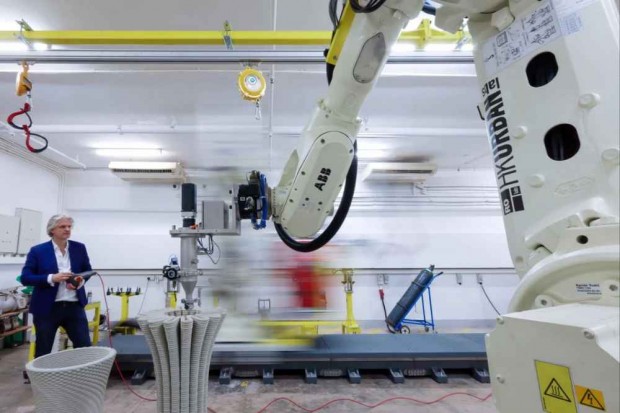A team from the University of Hong Kong has invented a new 3D printer that has the potential to revolutionize the future of construction technology. However, the equipment did not garner the interest of property developers, resulting in funding challenges.

(Photo : South China Morning Post/Dickson Lee )
University of Hong Kong's New 3D-Printed Concrete Revolution
According to Christian Lange, an architect at the University of Hong Kong, his recently renovated fabrication lab features two big robots on tracks that rapidly alternate between welding, picking and putting, and printing concrete. Lange noted that a one-meter-tall (3-foot-tall) vase could be 3D-printed in 20 minutes, excluding the drying time, whereas a terracotta reef structure could require up to four hours.
The efforts made to commercialize the findings have yet to be successful. Lange and his team have failed to grab the attention of property developers in their presentation, and they have also encountered difficulties in obtaining finance. As mentioned, after submitting their application to the government's Construction Innovation and Technology Fund in the middle of 2022, the researchers are still seeking a response to their inquiry.
During the policy address in October of the previous year, the chief executive declared that the fund would provide financial assistance to over 400 businesses in 2024. The fund's primary objective is to encourage the implementation of innovative technologies in construction projects.
As per Lange, implementing 3D printing technology for concrete in Hong Kong is still in its 'infancy.' The technique is progressing in other regions of the world, such as in Copenhagen, the capital of Denmark, where it was utilized to construct a community facility 72 square meters or 775 square feet in size and featured a gym and a washing room.
The group is concentrating on landscape architecture, developing non-structural components that could enhance the urban environment, including flower containers, large vases, and benches while recognizing that 3D-printed concrete is a novel material that must adhere to building codes.
Also Read: Building the Future: The Eco-Friendly Advantages of Modular Home
Beginning of 3D Printing in the Construction Sector
The sequential deposition of materials under computer control to produce three-dimensional forms is known as 3D printing or Additive Manufacturing (AM). It is beneficial when it comes to prototyping and producing geometrically difficult components.
The process was initially invented during the 1980s; however, due to its complexity and high cost, it had limited practical implementations. It has become relatively straightforward and affordable since the year 2000. As a result, it has grown helpful for various applications, such as product design, components and tools, consumer electronics, plastics, metalworking, aerospace engineering, dental and medical devices, and footwear.
Since 2005, the use of 3D printers in the home has become feasible, which has led to a rapid increase in the sales of additive manufacturing devices, sometimes known as '3D printers.' Furthermore, construction 3D printers' are the type of 3D printing devices specifically designed for use in the construction sector.
Printing can manufacture numerous components simultaneously, use multiple materials, and employ various colors, depending on the technology utilized in the printing process. One method that can enhance accuracy is a high-resolution subtractive technique that removes material from an enormous printed item. In the fabrication process, some procedures involve the utilization of dissolvable materials that support overhanging elements.
On the other hand, printing materials such as metal can be quite costly; therefore, in this particular scenario, it might be more cost-effective to print a mold and then utilize that mold to design and manufacture the object.
Related Article: Construction of the World's Tallest 3D Printed Tower Began Construction in the Swiss Alps







